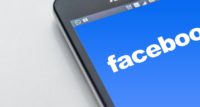 Radio stations like running Facebook ads because they are inexpensive and can target specific audiences. If your station only has $1,000 to spend on marketing and wants to reach men between the ages of 25 and 54 in a particular Milwaukee suburb, Facebook ads are a very effective way to do so. If your station is looking to spend money on Facebook ads, here are some tips:
Radio stations like running Facebook ads because they are inexpensive and can target specific audiences. If your station only has $1,000 to spend on marketing and wants to reach men between the ages of 25 and 54 in a particular Milwaukee suburb, Facebook ads are a very effective way to do so. If your station is looking to spend money on Facebook ads, here are some tips:
1. Have a Specific Digital Goal
Online ads are powerful because you can measure how much it costs to get people to perform a specific online action. However, if the goal of your ad campaign isn’t digital, you lose this advantage. Never run a Facebook ad campaign with a vague goal like “raising brand awareness.” Also, don’t set up your campaign with a non-digital goal in mind, such as “increasing the ratings.” Nielsen is fickle, and you could spend a lot of money with no ratings results, without being able to tell if the disconnect is due to Facebook or Nielsen.
Instead, create ad campaigns that drive people towards a very specific digital action. The key is that you want to be able to measure the number of people who take this action as a result of your ad campaign. For example, if you want to get more listeners for your station, design a campaign with the goal of getting people to stream the station. If you want to raise awareness about the morning show, design a campaign to drive online entries for a morning show contest. If you want to promote your station’s big summer concert, design a campaign that leads people to buy tickets online.
Of all the possible digital goals for a Facebook ad campaign, my preference is to drive people to sign up for your radio station’s email database. This is because once you capture a listener’s email address, you can reach them again at any time without spending more money. On the other hand, if you drive them to stream the station, you will have to pay for another ad to get them to stream again. I also prefer driving people to the email database over your station’s Facebook page because you own your station’s email list and can use it however you see fit; your Facebook page is subject to the whims of Facebook’s algorithm. One change by Zuckerberg and far fewer listeners could see your station’s posts on Facebook even though you paid for ads to get followers.
2. Send People to a Landing Page
Don’t send people to your radio station’s homepage; instead, send them to a landing page. A landing page (also called a “squeeze page”) is a webpage that encourages visitors to take a specific action by removing other options. For example, if the goal of your Facebook ad campaign is to get people to enter a contest, send them to a page that describes the contest and displays a form to fill out, but removes all other elements, including the main menu and the sidebar. Here’s a guide to designing website landing pages.
3. Run A/B Tests
When your ad campaign has a specific, quantifiable digital goal, you can measure how well it’s performing. This allows you to fine tune it as you go to maximize your results. To do this, use “A/B Tests.” In an A/B test, you run two campaigns that are identical in every respect except one. For example, you might run two campaigns on identical dates, with identical budgets, targeting identical audiences using identical copy, but with two different images. After a week, see if there’s a noticeable difference in the number of clicks with these ads. If so, modify your ad campaign accordingly.
The key to gaining actionable information from an A/B test is to only test one variable at a time. Here are some variables you may want to test:
- Headline copy
- Image
- Target audience
- Time of day
- Days of the week
You can also test variables on the landing page. In this case, you’ll run two identical ad campaigns with each driving people to a different landing page. These pages will be identical except for one variable, such a the headline text. When you test a landing page, you’re not testing to see which ad campaign gets the most clicks (because they’re identical, they should get roughly the same); instead, you’re measuring to see which landing page leads to more goal completions.
Before allocating lots of money to your Facebook ad campaign, run a series of A/B tests to make sure you’re getting the biggest bang for your buck.
Facebook ads can be a powerful tool for radio broadcasters, but using them effectively takes some effort. Be sure to put enough thought into your campaigns and monitor the results closely.
More Digital Tips
- An Introduction to WordPress Custom Post Types for Radio Broadcasters
- Your Station’s Website Should Include These Two Types of Content
- 10 Ways to Promote Your Radio Station’s Mobile App
- 6 Mistakes Radio Stations Make on Their ‘Advertise with Us’ Webpage
- Question: Audio or Video? Live or Virtual Events? Answer: All of the Above.
- A Simple Digital Treat to Thank Your Radio Listeners This Thanksgiving - November 13, 2023
- Interview Questions When Hiring Your Radio Station’s Next Digital Marketing Manager - November 6, 2023
- A Radio Conversation with ChatGPT: Part 2 – Promotions - October 30, 2023





Leave a Reply